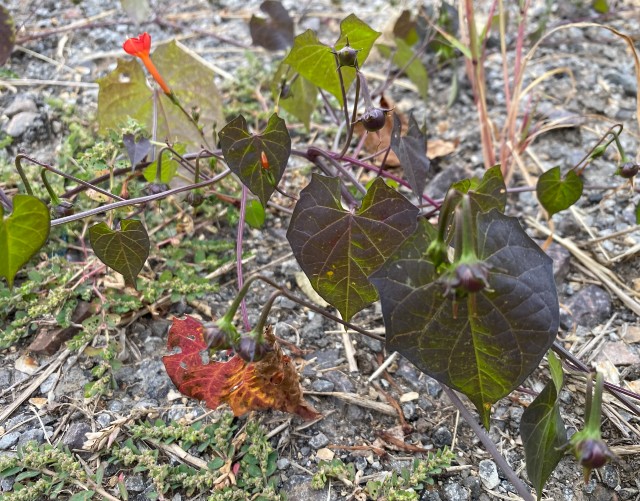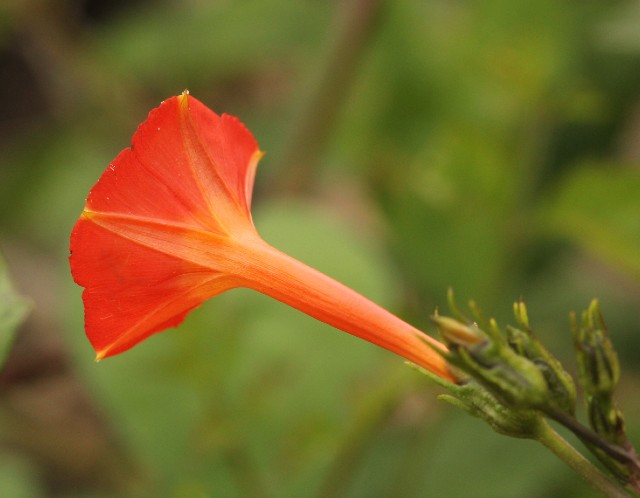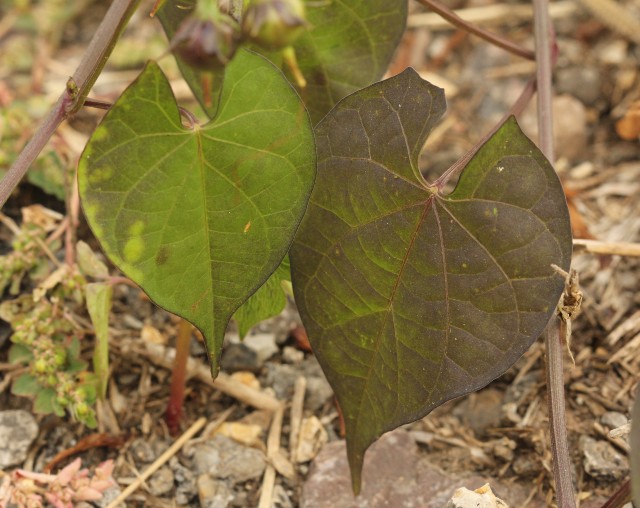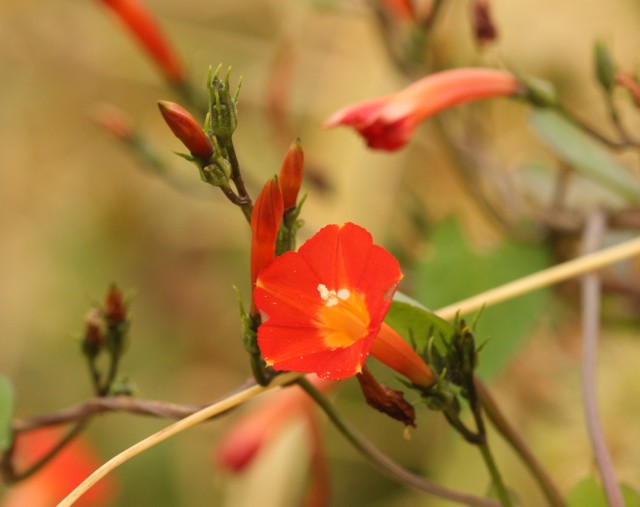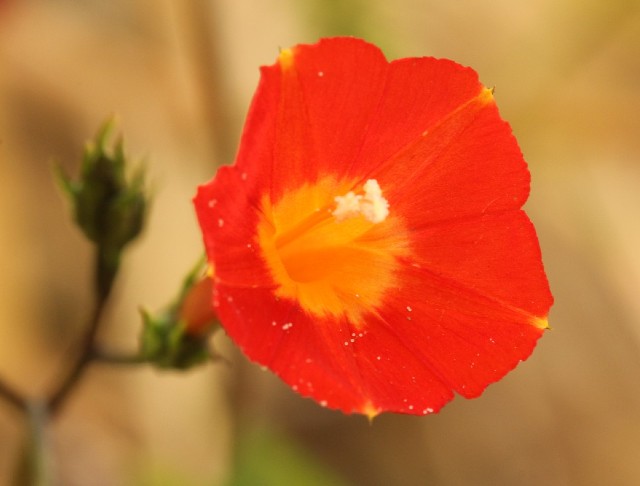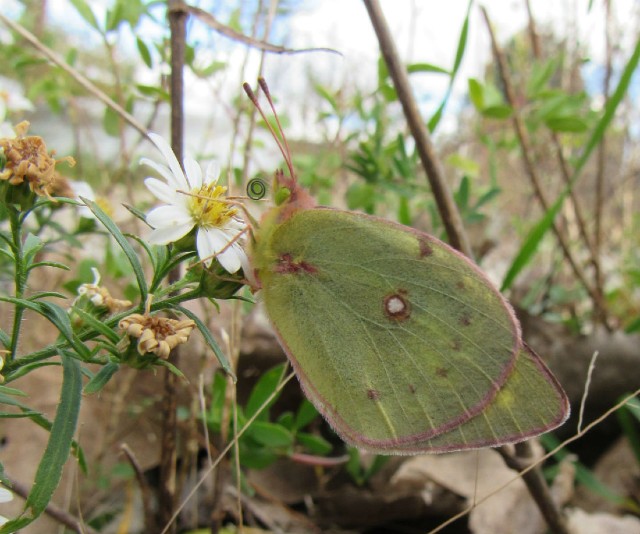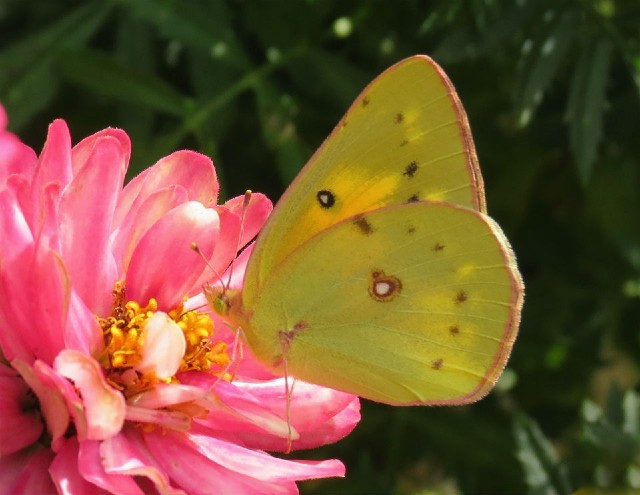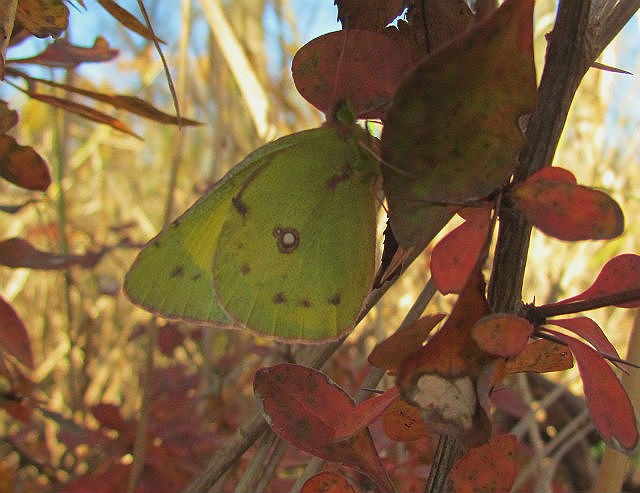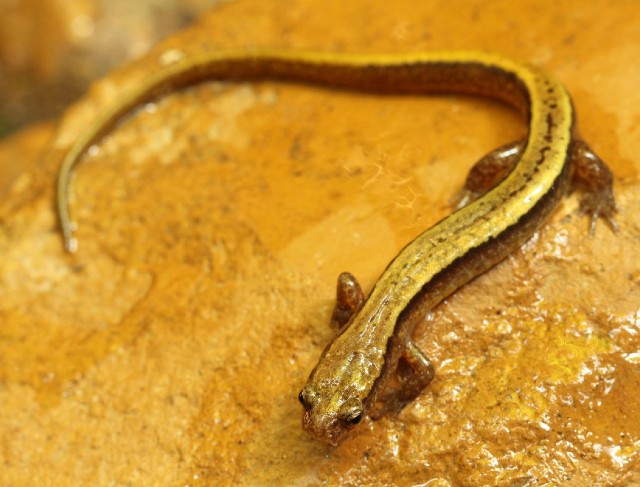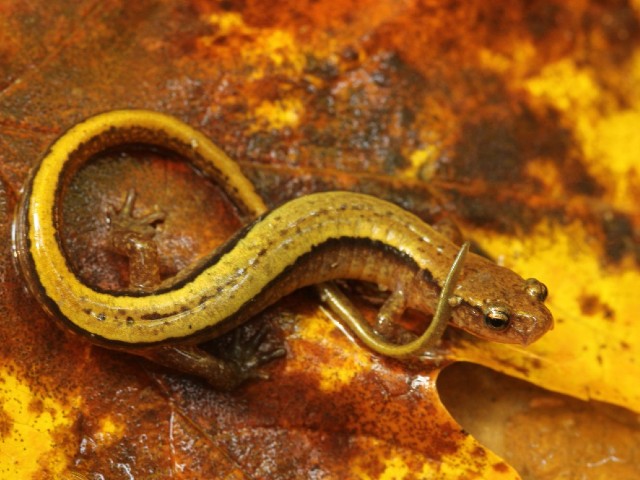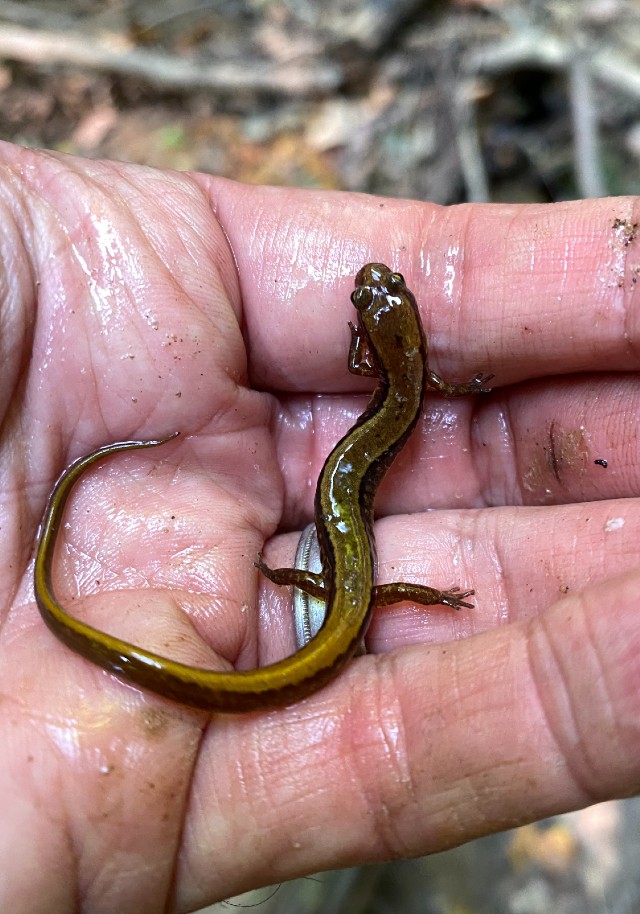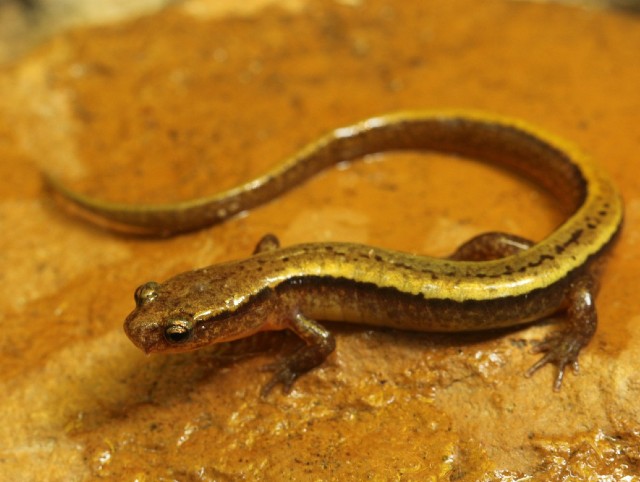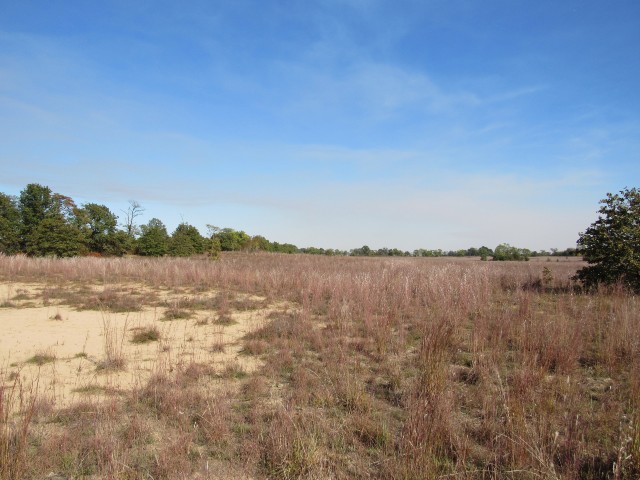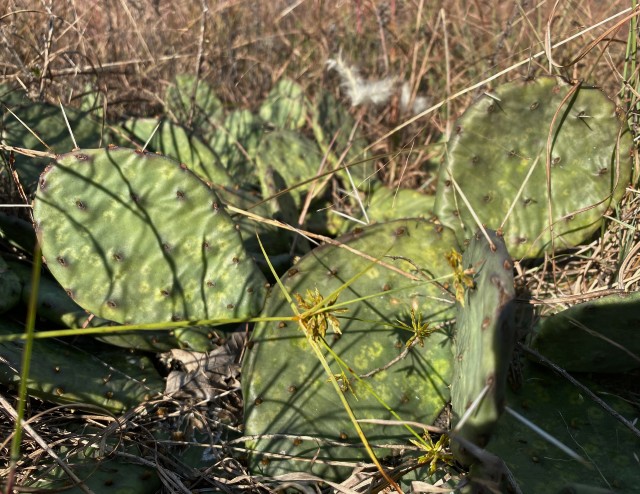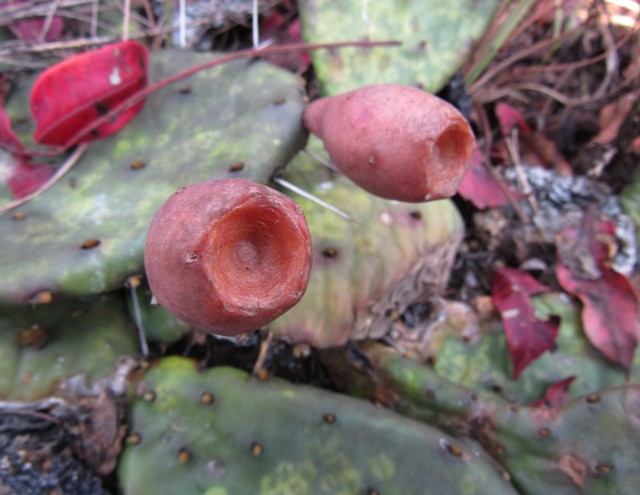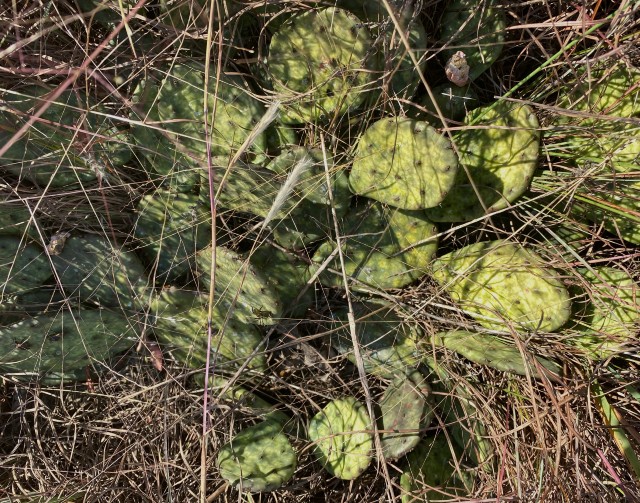While visiting southern Illinois in October, this brightly colored flower caught my eye as I was checking my minnow traps that I placed in a waterway near some railroad tracks.
This plant is native to tropical America and has been introduced in much of the United States. It can be found in disturbed areas along roads, stream banks, fence rows, old fields and railroad tracks.
Red Morning Glories are fast growing and have twisting, climbing flowering vines that attract butterflies. Their vines can reach 10 or more feet in length.
As is name implies, its flowers are not as large as those of other morning glories, being about 2-4 inches long and about half as wide. The blooms are dull red with an orange throat.
The leaves of this plant are heart-shaped at the base, and commonly are three-lobed. Their smooth margins sometimes develop low, pointy lobes, so that they almost look like ivy leaves.
Though Small Red Morning Glory’s long, tubular flowers are clearly adapted for pollinators such as hummingbirds and hawk moths, they’re also capable of self-pollination.
It was neat to encounter this plant, which is also known as Redstar, Scarlet Creeper, Starflower and Scarlet Morning Glory, for the first time.


